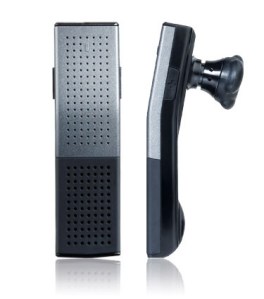
Bluetooth headsets seem like a really good idea until you start thinking about the security implications: anyone savvy with Bluetooth technology that can get within range can theoretically eavesdrop on your conversations, initiate man-in-the-middle attacks to hijack your Bluetooth traffic, and maybe even pair with your devices without your knowledge to take control and snag your data. Most consumers don’t need to be terribly concerned with these issues, but a handful of people are very concerned about them—and Biometric Associates is here to help with the BlueArmor 100 Secure Headset—all the Bluetooth you can handle with 128-bit voice encryption and patent-pending security technology. And, so far, the BlueArmor 100 is the only Bluetooth headset to meet security requirements from the U.S. Department of Defense.
“This is a product that people have been requesting for several years,” said BAL president and CEO Dougalas Kozlay, in a statement. “Eight states and most military bases prohibit cell phone use while driving. A Bluetooth headset is the obvious answer, but the security vulnerabilities of standard Bluetooth headsets have been well documented. We are pleased to offer a secure, hands free solution to both those in the military and those who desire military-grade security.”
The BlueArmor 100 supports Bluetooth 2.1 and higher and offers many features common on Bluetooth headsets today: dual mics with DSP processing for high audio quality, acoustic echo cancellation, and runs on a lithium polymer battery that can give up to four hours of talk time on a charge. However, there are a few additional features, including 128-bit Bluetooth encryption and a secure pairing system that ensures no man-in-the-middle attack intercepts communications: when pairing up, the headset speaks a six digit random number, and if that number matches the one displayed on the phone, users can approve the pairing. If it doesn’t…that means someone may be listening in. The Bluetooth radio is set to non-discoverable mode. The headset will only pair with one phone at a time, and doesn’t support music playback.
Right now, the BlueArmor will pair with a variety of smartphones from RIM, HTC, Palm/HP, Apple, Motorola, and Samsung; however, NSA-approved security is only available with phone-based security software, and right now that’s only available for selected BlackBerry devices. But if you want one, they’re available now for a list price of $199.95.


